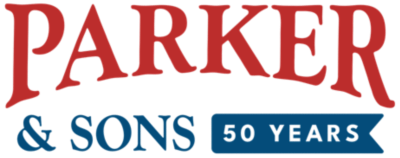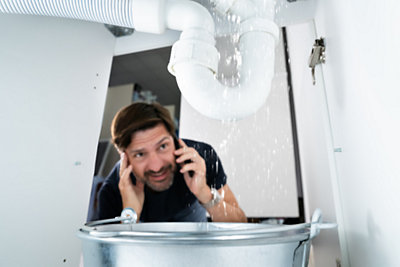Before You Drain Your Savings: Does Home Insurance Cover Plumbing?
Roughly 95% of homeowners in the United States have homeowner's insurance. While having insurance coverage is comforting and vital, it's sometimes confusing to know what your home insurance will cover.
One of the many gray areas is plumbing issues. Does home insurance cover plumbing, and how can you keep track of what it will and won't cover? Read on for a thorough guide on home insurance coverage, we'll also highlight some of the different types of home insurance.
Does Home Insurance Cover Plumbing?
What's Covered?
What Isn't Covered?
Case By Case Coverage
Types of Coverage
Understanding Home Insurance Plumbing Coverage
Does Home Insurance Cover Plumbing?
The first thing to understand about home insurance is that coverage varies immensely. Some plans focus on covering one hazard, while others focus on another problem entirely.
To further complicate the matter, some companies won't offer the same coverage as others. Company A may cover plumbing emergencies under their general plan, but Company B may not cover them at all.
Due to drastic gaps between coverage plans, you’ll first need to look at your insurance provider. Consider speaking to an insurance agent and see what sort of problems their plans cover.
That said, there are dozens of plans available from countless insurance companies. You can find home insurance plans that cover any hazard you can imagine.
So, yes, home insurance can often cover plumbing issues. But not all plans will cover your plumbing issue, so make sure you're familiar with it in advance.
What's Covered?
What sort of issues are home insurance more likely to cover? There are some problems that will appear in most plans. Here are some of the issues you can assume have coverage (though you should always check).
Sudden Damage
Insurance is most useful when sudden and unexpected damage occurs. In this situation, it's necessary for the damage to have no precursor. For example, if there were signs of damage coming on, your insurance company may not cover it. Insurance companies won’t cover an issue if they think you purposely allowed the problem to worsen over time for further coverage. This can constitute insurance fraud, so insurance companies will not allow such claims.
Examples of sudden damage include:
Burst pipes
Mechanical failure of your plumbing
Hidden damage
If you aren't certain if something has coverage, contact your insurance agent. They can clearly explain specific issues covered under your plan.
Emergency Destruction
Emergency problems are usually covered under most plans. Similar to sudden damage, this constitutes severe damage that needs emergency repairs. One example may be burst pipes, which often fall under flood insurance. Burst pipes can lead to severe flooding, water damage, and more. Another issue may be a problem with your sewer main. Sewage flowing back through your plumbing pipes is a good example of this problem.
What Isn't Covered by Homeowners Insurance?
What problems are rarely included in insurance coverage? Thankfully, there aren't many that fit this definition. The most important one to be aware of is an issue with preventable damage. If you purposefully allow a problem to worsen, most companies will not pay to have the issue fixed.
Another example is problems that were caused by user error. If you break a pipe by swinging a wrench at it, your insurance company isn't likely to help you with repairs. Make sure you aren't at fault for damage before filing a claim.
Case By Case Coverage
What issues fit into a gray area? Here are some examples of issues that only sometimes have coverage under homeowners' insurance.
Mold
One problem that can vary in size and severity is mold. Some plumbing issues can cause considerable mold growth. A leaking pipe can keep floors damp and warm. These conditions are perfect for mold to grow. Once the mold starts growing, it can worsen property damage. However, the mold is often seen as secondary damage, which can stop companies from covering it. See if mold damage or water damage is under your plan.
Unknown Damage
Another problem that may occur is unknown plumbing damage that wasn't seen the first time. Damage of this sort is difficult to categorize, making it hard to prove it was a plumbing issue.
If you're concerned, speak to your insurance agent about possible damage with no source. You should document any evidence you have so you can prove it was a problem that should be covered.
Floods
Many people look to their home insurance after a flood. But the cause of the flood is the main problem the insurance company will be looking into.
If the flood was caused by external sources, you may need a specific type of homeowner's insurance. If the flood was caused by a burst pipe or other plumbing issue, it may fall under your plan’s coverage.
Outside Damage
Outside damage consists of any damage due to sources that didn't originate in your home. However, this does not count storms or natural disasters, as those fall under other categories.
Instead, this counts for issues like the water main outside of your house or frozen pipes. Sewer backups are also considered outside damage.
Appliances
Finally, appliances such as washing machines and water heaters are often in the same category as plumbing. While most of us think of plumbing only as drains and restrooms, it often covers any water-carrying pipe.
Your hot water heater counts as part of your plumbing system for insurance purposes. Similarly, the pipes that bring water to washing machines will also count. Speak to your insurance agent and see if these critical appliances are covered under your plan.
Types of Coverage
Now that we understand the sorts of issues that vary in coverage, what are the different types of coverage? Home insurance is not a single, widely generalized category. Your coverage will vary based on what type of plan you have. Here are some of the most common.
Personal Property
Personal property plans are more than just plumbing. These coverage plans often cover any reason your home may be damaged. Sources include fire, storms, natural disasters, structural failure, and more.
As the name suggests, these plans pay for your damaged or broken personal belongings. For plumbing, this would kick in if burst pipes pump water into your home. The homeowner's insurance will reimburse you for the items you've lost.
Loss of Use
Loss of use coverage plans aren't as common as other types. Primarily, this is because these are seen as a form of luxury. Loss of Use plans cover temporary living expenses after a loss. The loss also must have coverage as well, or this coverage won't kick in.
Loss of use pays for your hotel stays, your restaurant meals, and any other temporary living expenses. These plans kick in if your home is unlivable and will help in the short term while you wait for repairs.
Dwelling
Dwelling coverage is a plan that covers damage in your home. Mostly, this deals with your home itself and no external sources.
Some things that are often under a Dwelling plan include:
Replacing or repairing ruined floors
Damage to the structure of your home
Replacing damaged cabinetry
While these areas are covered, the limits occur around plumbing. Dwelling coverage will rarely cover broken plumbing or internal systems if they cause damage.
Other Structures
Finally, other structure plans are useful to cover damage to structures that aren't your main house. These are rarer and are often only in place for homes that have a large property. If your home has a guest house on your property or a detached garage, this coverage will kick in. Some sheds are also may also fall under this coverage, especially if they're storing sensitive equipment.
Overall, this is an uncommon but extremely useful plan. You should speak to your insurance agent about this coverage if your property includes multiple structures.
Understanding Home Insurance Plumbing Coverage
Does home insurance cover plumbing issues? Ultimately, it depends on what sort of coverage you have. Contact your insurance agent to find a clear answer on what your home insurance plan covers. If you are looking into home insurance for the first time, we suggest aiming for coverage that handles as many problems as possible.
Once you understand what your home insurance does and does not cover, it may be time to find a professional for some of those fixes. If you're concerned about plumbing problems or emergencies, contact us at Parker & Sons. We're happy to help you schedule any service or inspection your plumbing, electrical, or HVAC systems may need.
Related Reading
Subscribe to our e-Newsletter
Stay up-to-date on current news, promotions, and industry tips.

